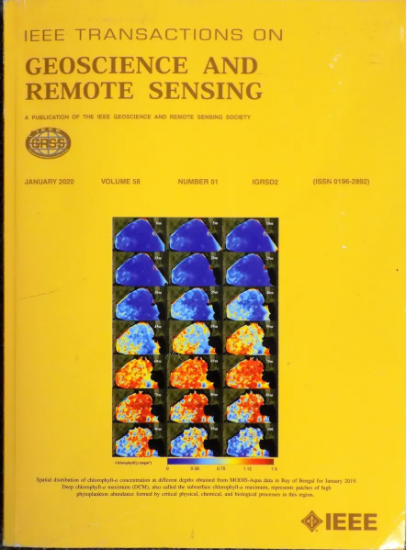基于多尺度对比域自适应的无监督遥感图像语义分割
IF 7.5
1区 地球科学
Q1 ENGINEERING, ELECTRICAL & ELECTRONIC
IEEE Transactions on Geoscience and Remote Sensing
Pub Date : 2025-04-15
DOI:10.1109/TGRS.2025.3560673
引用次数: 0
摘要
用于遥感图像语义分割的无监督域自适应(UDA),目的是在标记的源域上训练深度模型,并将其应用于未标记的目标域。然而,由于跨域遥感图像的分辨率和场景不一致,导致图像分布差异较大,削弱了语义分割效果。针对上述问题,提出了一种基于多尺度对比域自适应的无监督遥感图像语义分割方法。首先,将平均教师模型引入UDA范式,为目标域数据生成伪标签,从而实现跨域分割能力。提出了一种动态类平衡采样(DCBS)方法,通过增加样本较少的类别的采样频率来缓解跨域数据中的类不平衡问题。然后,提出了一种数据增强方法,即跨域混合(CDMix),以减小源域和目标域之间的差距。最后,提出了一种多尺度跨域对比损失(MCCL)方法,该方法引入了对比学习,在源域和目标域之间学习域一致的特征,从而获得更加连贯和判别的特征表示。实验结果表明,该方法对无监督遥感图像的语义分割具有较好的效果。本文章由计算机程序翻译,如有差异,请以英文原文为准。
Unsupervised Remote Sensing Image Semantic Segmentation Based on Multiscale Contrastive Domain Adaptation
Unsupervised domain adaptation (UDA) for remote sensing image semantic segmentation aims to train a deep model on the labeled source domain and apply it to the unlabeled target domain. However, resolution and scene inconsistencies of cross-domain remote sensing images lead to great distribution differences, which weakens the semantic segmentation effect. To solve the above issues, an unsupervised remote sensing image semantic segmentation method is proposed based on multiscale contrastive domain adaptation. First, the mean teacher model is introduced into the UDA paradigm to generate pseudo-labels for target-domain data, thereby achieving the cross-domain segmentation capability. A dynamic class balance sampling (DCBS) method is proposed to mitigate the class imbalance problem in cross-domain data by increasing the sampling frequency of the categories with fewer samples. Then, a data augmentation method called cross-domain mixup (CDMix) is developed to reduce the gap between the source and target domains. Finally, a multiscale cross-domain contrastive loss (MCCL) is developed, which introduces contrastive learning to learn domain-consistent features across the source and target domains, resulting in a more coherent and discriminative feature representation. Experimental results show that the proposed method can yield superior performance for unsupervised remote sensing image semantic segmentation.
求助全文
通过发布文献求助,成功后即可免费获取论文全文。
去求助
来源期刊

IEEE Transactions on Geoscience and Remote Sensing
工程技术-地球化学与地球物理
CiteScore
11.50
自引率
28.00%
发文量
1912
审稿时长
4.0 months
期刊介绍:
IEEE Transactions on Geoscience and Remote Sensing (TGRS) is a monthly publication that focuses on the theory, concepts, and techniques of science and engineering as applied to sensing the land, oceans, atmosphere, and space; and the processing, interpretation, and dissemination of this information.
 求助内容:
求助内容: 应助结果提醒方式:
应助结果提醒方式:


